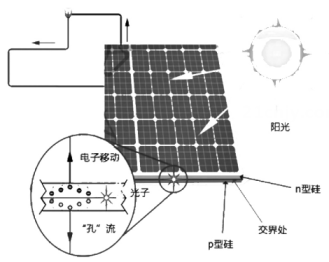We all know the sun is important. It makes life on our planet possible. But how does the sun do that? It's the sun's energy.
Energy from the sun is called solar energy (太阳能). It comes in the form of light or heat. People have used solar energy for thousands of years. The sun's energy can be used to heat water and even food. If you own a magnifying glass, your parents have probably warned you not to leave it in the sun. Solar energy can actually make the magnifying glass burn objects underneath it, causing a fire. This type of energy from the sun is called solar thermal (热的) energy.

We can also turn the sun's light into electricity. This is done with solar panels (板). Solar panels are made up of a material called silicon (硅). The silicon is heated and formed into very thin wafers (晶片). When the sunlight hits the solar panel, the electrons in the silicon move and flow through wires (电线). Using this technology, we can run a calculator and even power cars.
But what happens on cloudy days? The electrons in the silicon will stop moving, which means the electricity can't flow. But this doesn't mean that solar energy can only be used on sunny days. People can use the batteries (电池) which are attached to (附着于) solar panels to store the electricity. So the stored electricity can be used to power cars at night or on cloudy days.
Did you know that solar energy is not as expensive as it used to be? In fact, in the last few years, solar panels have become much more affordable for people to use. Since the sun gives off more energy in one second than people have used, imagine what we could do if we used the sun's energy to power our planet.